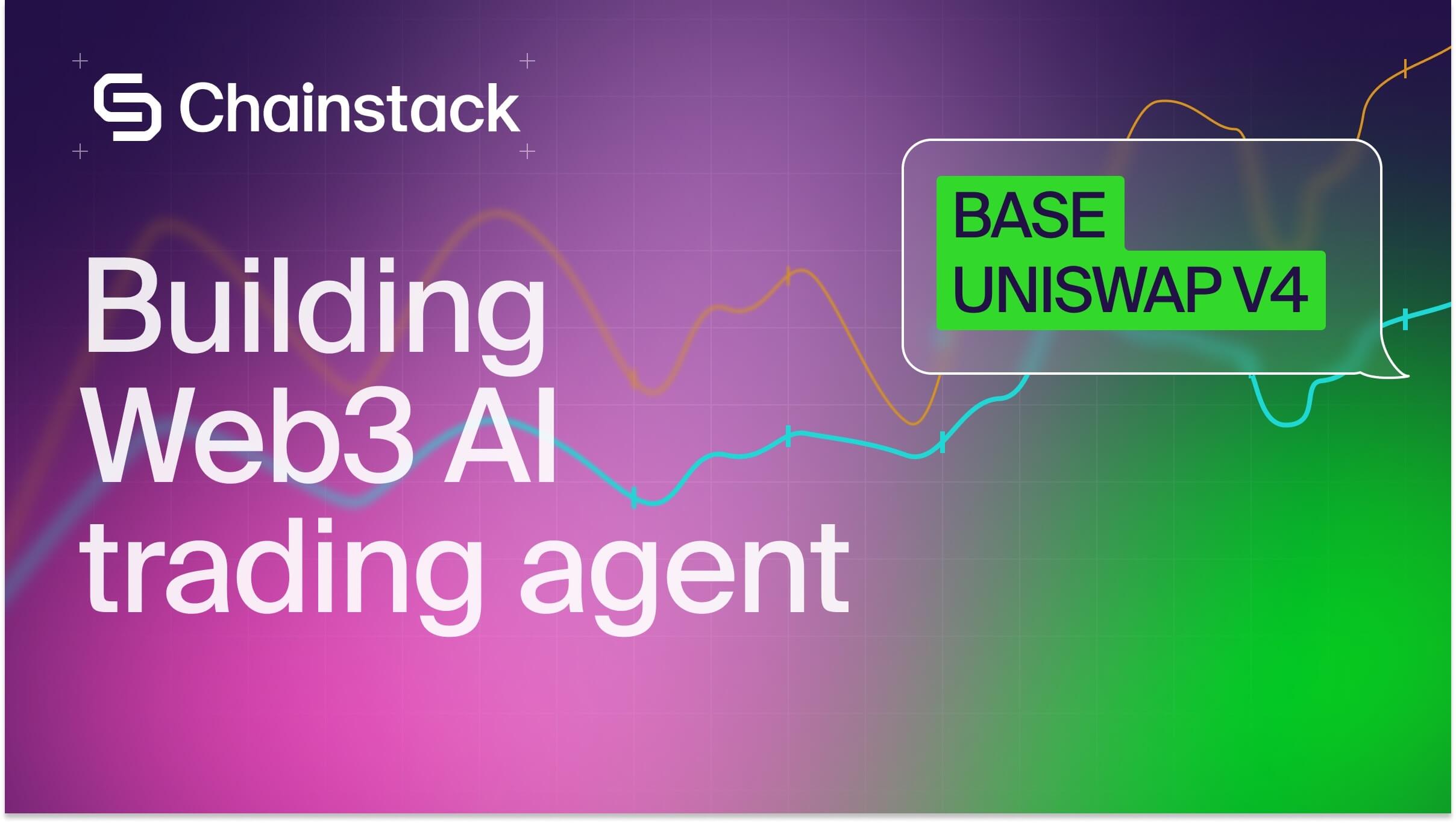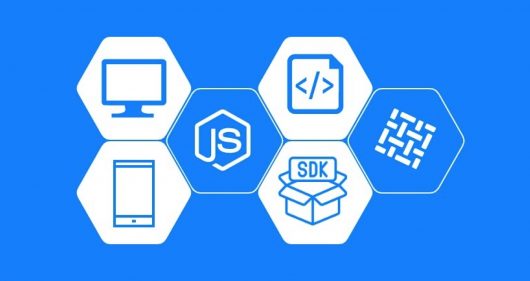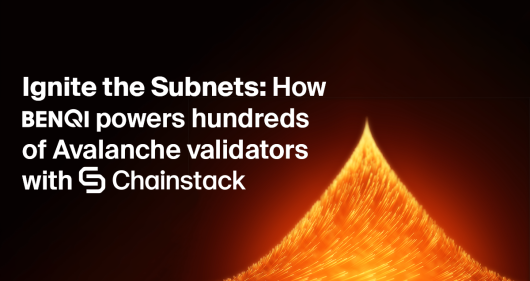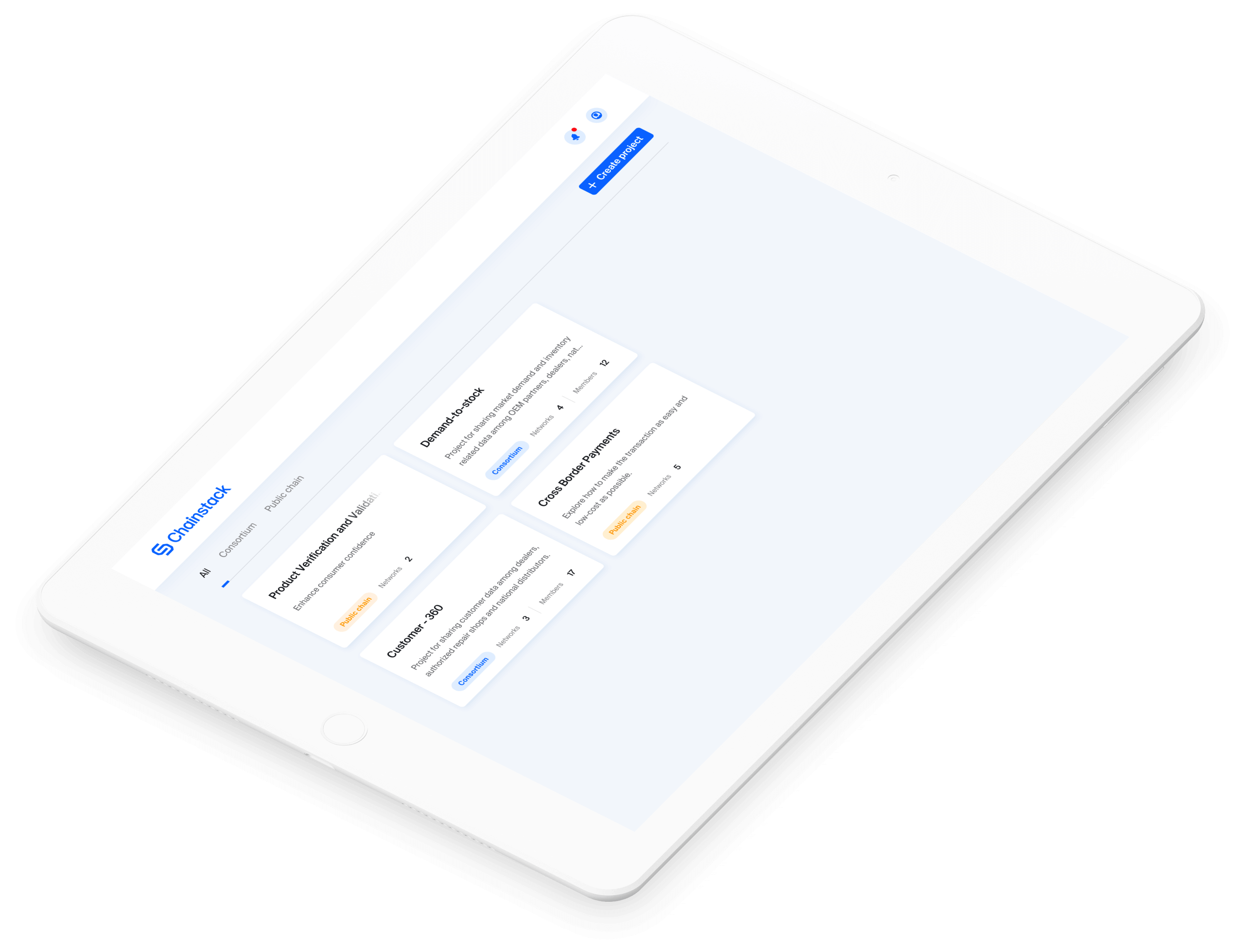Create your own blockchain: A guide to Appchains and how to deploy them on Chainstack
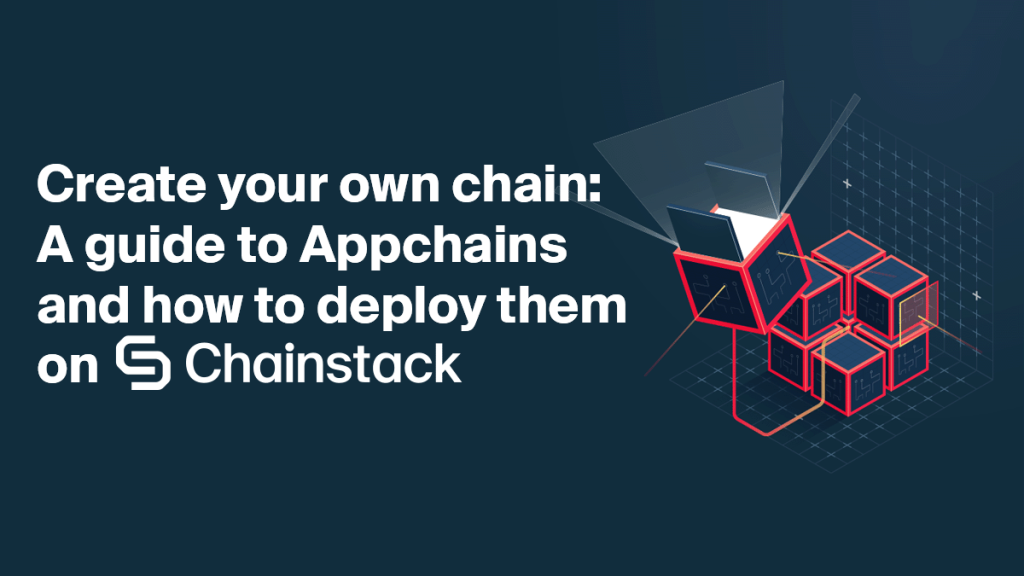
As we venture deeper into the world of Web3, the need for effective solutions to handle network resources is more significant than ever before. With the increase in users and transactions, networks often struggle with lowered performance and escalated transaction fees. If you’ve ever faced an expensive or failed transaction during a popular NFT drop or on a DEX during a bullish market, you’d relate to this issue.
Modern problems require modern solutions—and Appchains aim to be just that. Developed as a counteractive measure to the limitations of using a public blockchain as the base layer for decentralized applications, Appchains offer dedicated chains for DApps. They are becoming a vital element that could propel us to the next stage of Web3 adoption. And, at Chainstack, we could not be more excited to provide you with the infrastructure to BUIDL on them effectively.
Rise of Appchains in Web3 development
As Web3 draws more users globally, blockchain developers increasingly need an ever more efficient way to create applications that will influence our digital future. However, without developer-friendly tools and infrastructure for their projects, many revolutionary Web3 ideas might never see the light of day. To accomplish this, developers like you need specialized resources to harness their creativity fully and create innovative solutions.
Appchains are a substantial step forward in Web3. They allow you to build and scale DApps on application-specific blockchains. This fundamental shift means that each DApp can operate as its own specialized chain, providing a robust foundation with improved security, scalability, and in some cases, interoperability with other established infrastructure.
Transactions on Appchains are processed out of their individual mempool, and gas fees can be as low or as high as you consider suitable. These factors enable Appchains to process transactions much faster than any Layer 1 can. With these speed and cost advantages, DApps built on Appchains are well-positioned to attract the next wave of Web3 users.
On their own, Appchains already offer a powerful platform for decentralized applications, providing them with dedicated resources that maximize efficiency and performance. This means no more fighting over shared computational or storage resources on the network—freeing you up to focus solely on creating exceptional Web3 experiences.
What are Appchains?
Appchains are more than just add-ons to an existing blockchain; they are application-specific blockchains designed to perfectly suit the needs of a specific DApp. These chains are also Layer-2 solutions, acting as a secondary framework on top of an existing blockchain—Layer 1—to boost transaction capabilities and decrease latency.
Each Appchain operates independently, which significantly isolates risk—an issue on one Appchain will not affect others. Moreover, Appchains can adapt their security model, accommodating application-specific assets and logic. This high degree of modularity gives you as a developer a grand canvas to design, fostering innovation and expansion in Web3.
Another substantial benefit is that these Appchains can share consensus—security is pooled and network effects are captured. This ‘shared security’ model is a distinctive feature of Appchains that allows multiple chains to run in parallel without compromising the security of the entire system.
Essentially, the benefits of using Appchains over traditional blockchains are multifold—scalability, lower fees, customization, and more. Appchains are on their way to taking Web3 applications to the next level of evolution, as they provide the perfect combination of traditional blockchains’ trustless nature with boosted efficiency and application-specific customization.
Appchain architecture
Essentially, an Appchain is a specialized layer of architecture where each application runs on its own dedicated blockchain, consensus algorithm, data models, network protocol, and more. It uses modular architecture, meaning you can select from a diverse set of existing modules while creating your Appchain, or design and implement one that matches your unique use case yourself.
How do Appchains differ from smart contract platforms like Ethereum? In essence, the architecture of Appchains sets them apart from traditional smart-contract platforms. The difference lies in flexibility and efficiency—Appchains are more runtime-flexible and efficient because they can choose their architecture and rulesets.
And speaking about Appchain architecture, let’s break it down into its five core layers:
- Network layer: This layer determines the network protocol that communicates with the nodes, setting the foundation of the Appchain.
- Data layer: An important layer that defines all transactional data standards and structures.
- Consensus layer: Decides the consensus algorithm for the Appchain, instrumental for ensuring the reliability of the network.
- Application layer: This layer represents the application-specific code that runs on the Appchain. It includes both the front-end user-facing software and back-end processes.
- Smart contract layer: This optional layer allows developers to deploy smart contracts on their Appchain, taking advantage of programmable blockchain functionalities.
With Appchains, you’re not limited by the constraints of the base-layer blockchain. Instead, you can devise an architecture that’s optimally designed for your application, giving you unprecedented flexibility and control over your DApps.
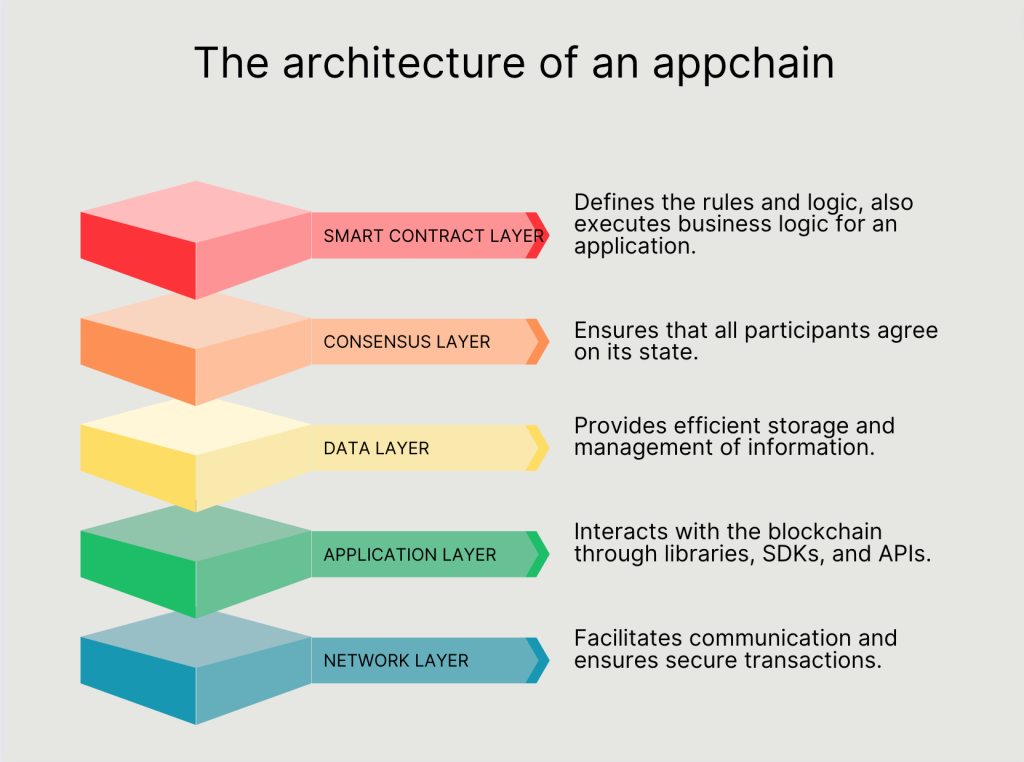
Appchain advantages
The rapid rise of Appchains comes from their ability to solve the critical challenges that have slowed the mass adoption of blockchain technology—scalability, fees, and customization:
- Scalability: Appchains operate individual chains for each application, avoiding the resource competition seen in traditional L1 chains and enabling independent scaling.
- Flexible fees: You can set custom transaction fees in Appchains, offering predictability and potentially lower costs that benefit users.
- Modularity: Appchains provide you with the flexibility to customize your blockchain’s features, including the base protocol, consensus algorithm, network architecture, and more.
- Security and privacy: Offering dedicated blockchains for each application, Appchains improve security and privacy through industry-standard protocols and modular design to mitigate risks.
Fundamentally, Appchains help us envision a future where each application can exist in its perfect environment. This ecosystem’s optimization paves the way for the broader adoption of blockchain applications, as more developers have the necessary tools to create excellent user experiences.
Create your own blockchain with Avalanche Subnets on Chainstack
As we delve deeper into the world of Appchains, one technology making a lot of waves is Avalanche Subnets. Subnets are a unique feature of Avalanche that enables you to create your customized blockchain. This powerful feature provides significant flexibility and control, whereby you can enforce specific virtual machines, validation schemes, and incentive structures per Subnet.
A Subnet consists of a subset of Avalanche validators achieving consensus on one or more blockchains. Each blockchain is validated by a unique Subnet, but a Subnet can validate multiple blockchains. The Avalanche Primary Network, a special Subnet, runs three main blockchains: the Platform Chain (P-Chain), the Contract Chain (C-Chain), and the Exchange Chain (X-Chain).
Advantages of Avalanche Subnets
- Independent networks: Subnets offer customizable execution logic, fee structures, and security, with performance unaffected by other Subnets’ activity.
- Native interoperability: Enabled by Avalanche Warp Messaging, Subnets are interoperable by default, which allows for seamless cross-chain communication between Subnets.
- Application-specific customization: Subnet validators can be obliged to meet certain hardware requirements before they are able to validate a Subnet to maintain its optimal performance.
- Compliance and privacy: Subnets support setting compliance and privacy policies for geo, license, and KYC/AML filtering, as well as private Subnets visible only to approved validators.
- Validator sovereignty: In a heterogeneous network of chains validators can pick only the Subnets they are interested in validating, significantly reducing their computational load.
Create your own blockchain with Avalanche Subnets on Chainstack:
Customize your Subnet chain config
Customize your Subnet with blockchain configuration parameters to define the operational limits and economic model of your Subnet. These parameters control aspects such as block production rate, transaction costs, and gas consumption, allowing for a tailored blockchain environment. Here’s a list of what’s available for you to tweak:
- gasLimit: Defines the maximum amount of gas consumed per block, limiting computation per block and maximum gas usage for a single transaction.
- targetBlockRate: Determines the desired rate of block production in seconds, influencing block issuance and base fees.
- minBaseFee: Establishes a floor on the EIP-1559 base fee of a block, effectively setting a minimum transaction gas price.
- targetGas: Targets a specific amount of gas to be consumed within a 10-second window, adjusting base fees based on actual network activity.
- baseFeeChangeDenominator: Modulates the base fee adjustment rate, with larger values indicating slower changes and smaller values allowing quicker fee adjustments.
- minBlockGasCost: Sets the minimum gas charge for producing a block, with the C-Chain typically setting this to 0.
- maxBlockGasCost: Caps the gas charge for block production.
- blockGasCostStep: Adjusts the block gas cost based on the time elapsed since the previous block, increasing or decreasing gas costs relative to the target block rate.
Avalanche Subnets provide a flexible and scalable solution for deploying bespoke blockchain networks, offering privacy, interoperability, and customization to meet diverse application needs.
Create your own blockchain with Avalanche Subnets on Chainstack:
Deploy an Avalanche Subnet on Chainstack
Creating an Avalanche Subnet with Chainstack is quite straightforward. Here’s how you can do it:
- Sign up on the Chainstack console to access the deployment and management tools.
- Create a new project in the Chainstack console, open it, and then click “Join Network.”
- In the node deployment wizard, pick “Avalanche” and “Testnet” or “Mainnet.” Fill in your “Node name,” then click on “Advanced,“ when it comes to “Configuration,” then select “Dedicated,” as your node type, as well as your preferred cloud provider and location.
- Confirm your settings in the final step of the wizard to deploy your dedicated Avalanche node.
- Stand by as your node is being deployed, and Voila! Your Avalanche subnet is ready to launch!
Deploying your Avalanche Subnet with Chainstack takes just a few clicks, and with that, you open the doors to a completely customized and controlled blockchain platform.
Don’t know how to set your Subnet up? Be sure to check out our tutorial on “Creating an Avalanche Subnet and a blockchain,” or simply ask Support for help!
Create your own blockchain with Avalanche Subnets on Chainstack:
Secure validator stake funding for your Avalanche Subnets with Benqi Ignite
When it comes to validators and the stake required to deploy your Avalanche Subnets, Chainstack and the Benqi Ignite program play pivotal roles. We simplify the validator deployment process, allowing you to launch your Avalanche Subnets validators with just a simple click.
Meanwhile, the Benqi Ignite program is designed to supply you with the necessary staking collateral to launch your Subnets. The program offers a much more cost-effective and accessible solution, via validator stake rentals, than the traditional approach, which asks for a significant upfront financial commitment.
Understanding that these costs might be prohibitive for many, we are excited to support the Benqi Ignite program in lowering the entry barriers for emerging Web3 developers and innovators eager to step into the world of Appchains by deploying their very own Avalanche Subnets.
Secure validator stake funding for your Avalanche Subnets with Benqi Ignite:
Access public Subnets and run validator nodes on Chainstack
Stepping into the world of Appchains with Avalanche Subnets opens up a variety of opportunities. Chainstack helps you access not only your Subnet but also the public Subnets on Avalanche, opening up a number of potential blockchain solutions to explore.
Our platform provides a user-friendly interface for accessing public Subnets, which enables you to:
- Connect to public RPC nodes: We provide a list of active nodes in the public Subnet. You can connect to any one of these nodes to interact with the subnet.
- Monitor network health: Our console’s dashboard provides valuable information about the health of the node to which you’re connected, like node status, recent block creation, and more.
Beyond connecting to public Subnets, we also provide tools for running validator nodes:
- Become a validator: You can choose to become a validator, whose role is to confirm transactions into blocks, maintaining the security and efficacy of the network.
- Detailed validator information: You can find a detailed overview of the validator’s working set, rewards, and more in the console’s node details screen.
- Manage validator nodes: You can start, pause, resume your nodes, upgrade them, and more.
With Chainstack, you have all you need to harness the power of Avalanche Subnets.
Create your own blockchain with Avalanche Subnets on Chainstack:
Index and query Avalanche Subnets with Dedicated Subgraphs
They say data is the new oil and Appchains aren’t falling behind on this either.. This does bring up a very valid question too—How can you explore vast amounts of Avalanche Subnets data effectively? And this is where Dedicated Subgraphs come in!
By providing a powerful, reliable, and easy-to-use solution for indexing and querying smart contract data, Dedicated Subgraphs enables you to harness the full capabilities of your Avalanche Subnets, by enabling up-to-date information of on-chain activity. In turn, you can then use such data for a variety of use cases, ranging from DeFi and GameFi to research and DApp analytics.
For example, asset prices, liquidity pools, and transaction volumes would serve DeFi Subnets well, whereas, in GameFi, you’d be tracking in-game transactions, NFT trades, and player achievements. In the former, you’re making use of real-time data to unlock portfolio tracking and trading insights, as brand-new feature sets, while in the latter—realistic in-game economies and player leaderboards.
Whether you’re looking to develop sophisticated DeFi platforms, immersive player-driven worlds, or any other application on Avalanche Subnets, Dedicated Subgraphs offers you the means to do just that. And do that with both the confidence and speed that comes with 99.9% Subgraphs availability and 2X faster indexing than the competition.
Deploy Dedicated Subgraphs for your Avalanche Subnets:
Launch your own zkEVM network with Polygon CDK on Chainstack
After exploring the exciting capabilities of Avalanche Subnets, let’s switch gears and delve into another revolutionary technology—Polygon CDK chains. The Polygon CDK is a versatile, open-source toolkit designed to simplify the creation and customization of blockchain architectures.
It enables developers to launch new Layer L2 chains on Ethereum and provides the framework for transitioning existing L1 chains to L2 solutions. The CDK supports a range of open-source components for customizing chain architectures, including ZK rollups that directly post transaction data on Ethereum and Validiums that post only the transaction hash.
“ZK” refers to “Zero-Knowledge”, a branch of cryptography that enables one party to prove they know a piece of information without revealing that information, whereas “zkEVM,” is a virtual machine that is compatible with both Ethereum architecture and ZK-proof computations. zkEVM networks, like the ones you can deploy via the Polygon CDK, leverage this technology to enhance transaction efficiency and interoperability.
Launch your own zkEVM network with Polygon CDK on Chainstack:
Advantages of Polygon CDK chains
- Modular design: Polygon CDK chains provide a flexible framework for ZK-powered L2 development, allowing for precise chain customization according to project specifications.
- Scalable architecture: Designed for enhanced transaction speeds, CDK chains support scalable solutions that cater to growing transaction demands without compromising performance.
- Dedicated data reliability: With its own data availability layer, CDK chains ensure reliable and independent off-chain data access, enhancing data integrity and resilience.
- Future-proof interoperability: An upcoming interoperability layer promises seamless L2 to L2 transactions, making CDK chains an integral part of a unified liquidity ecosystem.
- Rapid transaction finality: Leveraging cryptographic security, CDK chains achieve near-instant transaction finality, ensuring robust security without the reliance on full nodes.
- Extensive ecosystem support: CDK chains benefit from a wide range of development, integration, and deployment tools provided by leading service providers in their ecosystem.
Polygon CDK stands at the forefront of Layer 2 blockchain development, providing developers with the tools needed to build scalable, secure, and interoperable blockchain solutions tailored to their specific requirements.
Launch your own zkEVM network with Polygon CDK on Chainstack:
Customize your Polygon CDK chain config
Customize your Polygon CDK chain with blockchain configuration parameters to set its functional boundaries and economic framework. These settings govern key elements like the rate of block creation, transaction fees, and gas usage, enabling you to customize the blockchain to your specific requirements. Below is a selection of parameters you have the flexibility to adjust:
- maxFeePerGas: Dictates the upper limit of fees per gas unit that transactions can incur, serving as a cap on transaction costs.
- maxPriorityFeePerGas: Specifies the highest priority fee per gas unit, directing validators to the premium for faster transaction processing.
- multiplierGas: Modifies gas prices via a multiplier, enabling adjustment of transaction fees in response to network conditions.
- minDelayTimelock: Determines the minimum waiting period, in seconds, that the timelock contract enforces before execution of actions.
- trustedAggregatorTimeout: Sets the deadline, in seconds, for the trusted aggregator to submit data, influencing network operations.
- pendingStateTimeout: Establishes the period, in seconds, after which a pending state is deemed outdated, affecting transaction finality.
Polygon CDK chains offer a versatile and expandable platform for creating unique blockchain networks, ensuring confidentiality, seamless interaction between different systems, and adaptability for a wide range of applications.
Launch your own zkEVM network with Polygon CDK on Chainstack:
Deploy a Polygon CDK chain on Chainstack
So, how do you launch a Polygon CDK chain on Chainstack?
- Register on the Chainstack console for access to deployment and management features.
- Start a new project within the Chainstack console, navigate to it, and select “Join Network.”
- Use the node deployment wizard to choose “Polygon” followed by “Testnet” or “Mainnet.” Enter a “Node name,” proceed to “Advanced” under “Configuration,” and opt for “Dedicated” as your node type. Also, pick your preferred cloud service and location.
- Review and confirm your configuration in the wizard’s final step to initiate your dedicated Polygon node deployment.
- Await your node deployment. Congratulations! Your Polygon CDK chain is set for activation!
Launching your Polygon CDK chain via Chainstack is a straightforward process, enabling immediate access to a fully customizable and autonomously governed blockchain network.
Launch your own zkEVM network with Polygon CDK on Chainstack:
Build your own modular chain with zkSync Hyperchains on Chainstack
zkSync Hyperchains are part of the ZK Stack, a flexible and highly modular open-source framework for creating sovereign ZK-powered Ethereum rollups. This innovative approach allows for the development of custom L2 and L3 Hyperchains, drawing on zkSync Era’s foundational code.
It emphasizes sovereignty and seamless connectivity, enabling creators’ full customization rights and the ability to interlink chains through Hyperbridges for trustless and efficient interoperability.
Advantages of zkSync Hyperchains
- Enjoy flat transaction fees, irrespective of gas price fluctuations.
- Benefit from default privacy settings across transactions.
- Access cost-effective oracles and other high-frequency protocols.
- Utilize ultra-low-cost Validium accounts for efficiency.
- Get free zkSync ETH from the Chainstack Faucet!
Build your own modular blockchain with zkSync Hyperchains on Chainstack:
Customize your zkSync Hyperchains chain config
- Chain mode: Choose from rollup, Validium, or Volition configurations to suit your needs.
- Layer: Deploy as either a Layer 2 or Layer 3 blockchain. giving you greater use case flexibility.
- Transaction sequencing: Opt for centralized, decentralized, or shared sequencing methods to balance between latency, security, and decentralization, with the option to employ external protocols for additional customization.
- Data availability: Leverage Ethereum’s ZK-rollup for secure and censorship-resistant data availability, or explore third-party options like zkPorter for economical transactions, Validium for auditability and privacy, and various ZK-rollup policies for application-specific requirements.
- Data visibility: Set your zkSync Hyperchains as public or private, with Validium mode offering out-of-the-box privacy for enterprise, and specialized L3 privacy protocols for user-level privacy.
- Gas token: Choose between using Ether, operating gaslessly, or integrating a custom gas token, providing flexibility in transaction fee management.
zkSync Hyperchains represent a paradigm shift in blockchain development, offering unparalleled customization, scalability, and privacy options. This makes them an ideal platform for developers looking to build innovative, efficient, and secure blockchain solutions.
Build your own modular blockchain with zkSync Hyperchains on Chainstack:
Deploy a zkSync Hyperchain on Chainstack
Building and managing your own zkSync Hyperchains on Chainstack is just a few steps away:
- Access the Chainstack console by signing up to access the deployment and management tools.
- Create and enter a new project on the Chainstack console, then click on “Join Network.”
- In the node deployment wizard, select “zkSync” and then decide between “Testnet” or “Mainnet.” Fill in your “Node name,” move to “Advanced” under “Configuration,” and choose “Dedicated” for your node type, including your desired cloud provider and location.
- Finalize your setup in the last step of the wizard to begin deploying your dedicated zkSync node.
- Await the deployment of your node. Your zkSync Hyperchain is now ready for its debut!
Chainstack puts you in control—build, launch, and manage zkSync Hyperchains for a tailor-made, efficient Layer 2 blockchain solution.
Build your own modular blockchain with zkSync Hyperchains on Chainstack:
Deploy your own L3 protocol with Starknet Appchains on Chainstack
Are you looking to break free from the limitations of Layer 1 chains or the restrictions of Ethereum’s contract functionality? This exciting journey can commence with Starknet Appchains, and managing this sophisticated technology becomes seamless with Chainstack.
Starknet Appchains are dedicated blockchains crafted to meet the specific needs of an application. Powered by ZK-STARKs, they utilize advanced cryptographic proofs and algebra to safeguard the integrity and privacy of blockchain computations, much like the Starknet mainnet does. Such chains allow for extensive customization, including unique hash functions and consensus mechanisms, all the while inheriting the robust security features of their foundational L1 or L2 networks.
Deploy your own L3 protocol with Starknet Appchains on Chainstack:
Advantages of Starknet Appchains
- Rapid development: Appchains facilitate quick protocol updates, enabling developers to roll out new features, without being tied down by the broader public L2 development timeline.
- Autonomous governance: Retain full authority over your Appchain’s development path, enabling swift integration of new features without the need for governance consensus.
- Cost-effective operations: Operating on L3, Appchains significantly reduce operational costs—by up to 1M times compared to L1—making complex applications more economically viable.
- Balanced security: Despite some compromises, like lesser censorship resistance, the fundamental security features of Appchains remain intact and reliable.
- Network congestion mitigation: Appchains are protected from the main network’s congestion, ensuring stable and predictable transaction environments, ideal for real-time processing.
- Privacy advancements: Serving as a platform for privacy-focused innovations, L3 Appchains can implement such policies as anonymous transactions or encrypted messaging solutions.
- Innovation sandbox: Appcchains offer a testing ground for experimenting with groundbreaking features or consensus models, potentially influencing broader Layer 2 advancements.
All-in-all, Starknet Appchains provide a versatile, cost-efficient, and secure platform for innovation, presenting an ideal balance between flexibility and foundational blockchain security.
Deploy your own L3 protocol with Starknet Appchains on Chainstack:
Customize your Starknet Appchain chain config
- Transaction fees: Enable or disable transaction fees through the
DisableTransactionFeeparameter, whereTrueis cost-free, whileFalseretains the standard fees. - Nonce validation: Enable or disable transaction order and security by validating the nonce, using the
DisableNonceValidationparameter, in order to safeguard against replay attacks. - Transaction execution limits: Set the complexity of transactions that can be executed, where the
InvokeTxMaxNStepsparameter caps the number of steps for transaction invocation, whileValidateMaxNSteps, the validation steps, optimizing performance and preventing abuse.
Deploy a Starknet Appchain on Chainstack
Starknet provides you with a Layer 2 capacity to build your standalone Appchain, removing existing limitations, and providing complete sovereignty, security, privacy, and scalability to your DApps.
Let’s look into the steps to deploy Starknet Appchains on Chainstack:
- Sign up via the Chainstack console to unlock deployment and administrative capabilities.
- In the Chainstack console, create a new project, access it, and hit “Join Network.”
- Within the node deployment wizard, select “Starknet” along with either “Testnet” or “Mainnet.” Specify your “Node name,” then navigate to “Advanced” in “Configuration,” choosing “Dedicated” for your node type, and selecting your cloud provider and location preference.
- Validate your choices in the wizard’s concluding step to deploy your dedicated Starknet node.
- Patiently wait as your node is deployed. And there you have it! Your Starknet Appchain is prepared for launch!
Starknet Appchains running on Chainstack can bring vast improvements to the scalability, privacy, and security of your blockchain ventures. Alongside, Chainstack ensures a simple interface and robust infrastructure to run everything smoothly.
Deploy your own L3 protocol with Starknet Appchains on Chainstack:
Bringing it all together
As we explore new avenues in the world of Web3, our role at Chainstack is to empower developers, innovators, and creators to leverage the power of decentralized networks. The advent of Appchains reflects a significant shift in blockchain protocols. Instead of adhering to the ‘one-size-fits-all’ design of traditional blockchain networks, Appchains allow developers to utilize application-specific chains.
By working with Appchains, we offer applications an optimal environment for operation. This leads to enhanced performance, a seamless user experience, and a more robust protocol. With Chainstack’s user-friendly console and powerful in-built tools, deploying and managing your appchain has become more efficient and streamlined.
Our interface simplifies every stage of the Appchain deployment process—from inception to management. Whether you’re deploying Avalanche Subnets, operating zkSync Hyperchains, or any other Layer 2 solution, we, at Chainstack, provide you the control to create, customize, and manage your networks tailored to suit your application’s unique requirements.
Revolution begins with a single step. Take that leap today into the world of Appchains by starting your next project. Join us at Chainstack as we build the future of Web3 together!
As we conclude, we at Chainstack want to thank you for your interest in Appchains and our role in supporting their deployment. You now have a solid foundation to kickstart your journey into the world of appchains. Remember, we’re always here to help. Let’s create the future, together.
Power-boost your project on Chainstack
- Discover how you can save thousands in infra costs every month with our unbeatable pricing on the most complete Web3 development platform.
- Input your workload and see how affordable Chainstack is compared to other RPC providers.
- Connect to Ethereum, Solana, BNB Smart Chain, Polygon, Arbitrum, Base, Optimism, Avalanche, TON, Ronin, zkSync Era, Starknet, Scroll, Aptos, Fantom, Cronos, Gnosis Chain, Klaytn, Moonbeam, Celo, Aurora, Oasis Sapphire, Polygon zkEVM, Bitcoin and Harmony mainnet or testnets through an interface designed to help you get the job done.
- To learn more about Chainstack, visit our Developer Portal or join our Discord server and Telegram group.
- Are you in need of testnet tokens? Request some from our faucets. Multi-chain faucet, Sepolia faucet, Holesky faucet, BNB faucet, zkSync faucet, Scroll faucet.
Have you already explored what you can achieve with Chainstack? Get started for free today.
 Ethereum
Ethereum Solana
Solana TON
TON Base
Base BNB Smart Chain
BNB Smart Chain Sui
Sui Unichain
Unichain Aptos
Aptos TRON
TRON Ronin
Ronin zkSync Era
zkSync Era Sonic
Sonic Polygon
Polygon Gnosis Chain
Gnosis Chain Scroll
Scroll Avalanche Subnets
Avalanche Subnets Polygon CDK
Polygon CDK Starknet Appchains
Starknet Appchains zkSync Hyperchains
zkSync Hyperchains











